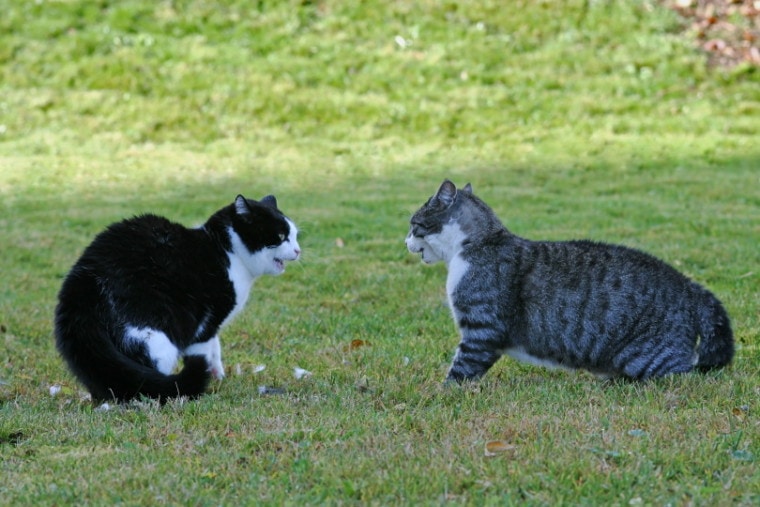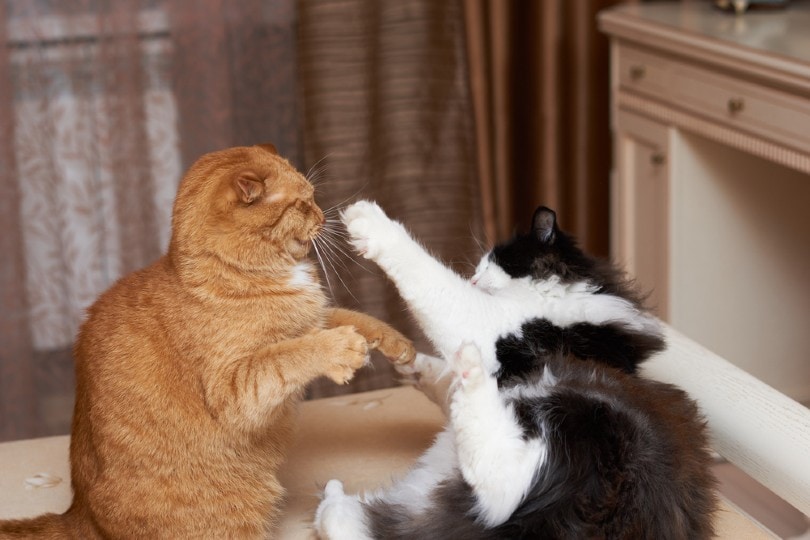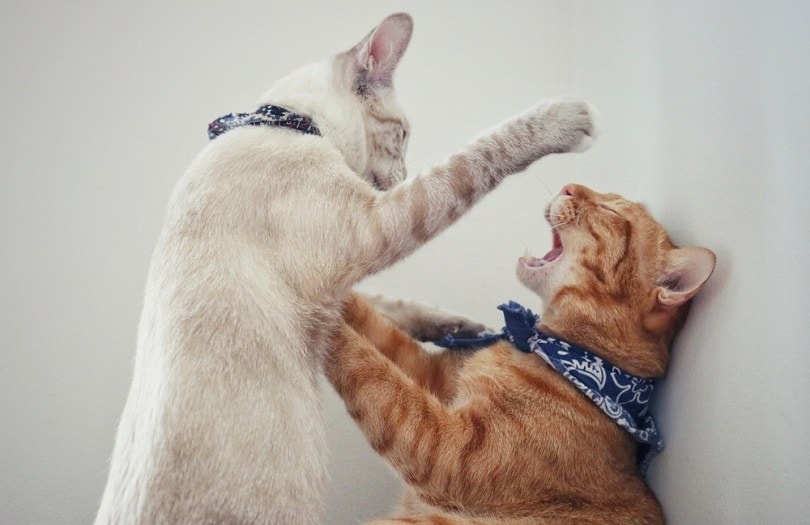
If you own a pair of cats that enjoy playing together, you may be wondering whether hissing is a normal part of their playing vocabulary or whether it’s a sign that your felines are about to fight. When your cats chase, pounce, and swat at each other, it can be entertaining to watch, but it can also be frightening sometimes because the line between playing and fighting can be fairly thin.
While cats can make loud and unsettling noises while playing, hissing is usually only reserved for fear or anger and is usually a sign that your cat had enough. It is not normal for a cat to hiss when they are playing. If your cat is hissing at you or another cat, it’s time to back off!
Body Language Is Key
While hissing is not a normal sound to hear during play, it can still seem as if your cats are fighting nonetheless! Cats use playtime as crucial development for fighting, protection, and hunting, especially young kittens, and this can come across as aggressive at times. This type of play is important, though, because it teaches cats their boundaries and vital social and physical skills.
When cats play, they tend to have their ears upright, take regular small breaks, take turns wrestling and pouncing, and have relaxed body language in general. Reciprocity is key to look for when cats are playing, and if one cat is dominating the play session, it may turn into a fight.

Signs of Fighting
Body language is key to figuring out if your cat is fighting, but you’ll hear hissing too! Hissing along with growling, moaning, and bared teeth are signs that a cat is angry and about to pounce. They will also usually flatten their ears, puff up their tails and fur, and show defensive, ready-to-pounce postures—these are all clear signs to back away quickly. Cats in this state should not be engaged, as they are frightened or angry and will attack if they deem it necessary.
Should You Break Up a Catfight?
It’s fairly normal for cats to have an aggressive episode during play sessions. Playtime can get heated at times, leading to increased irritation between cats and possibly leading to a small scuffle. If you attempt to pet your cat and they hiss, flatten their ears, or puff up their coat, it is best to stay clear or you are likely to get scratched or bitten. But what about two cats whose playing turns to fighting?

Should You Intervene?
If possible, it’s usually better to try to divert the cats’ attention rather than directly intervene. Attempting to break up the fight can result in scratches and bites for you, but also increased anxiety, anger, and aggression between the cats, potentially making the situation worse!
There are several ways to distract fighting cats. Try to make a loud noise like clapping, slamming a door, or banging pots together to get the cats’ attention and thus, break up the fight. Another method is to use a large cushion or blanket to create a barrier between the cats, which can help because it blocks their view of one another and may serve to calm them down, at which point, you can then take them to separate rooms. Treats or food is another good method of distraction or to help calm them down after the fight is over.
Reintroducing Your Cats
Slow introductions are vital to integrate a new feline into your home safely and with as little stress as possible. This can take anywhere from a few days to several weeks, but it will help prevent possible fights in the future. If you’ve followed these integration steps carefully and your cats are fighting all the same, you may need to repeat the integration process and reintroduce your cats.
You’ll need to keep them separated for a time (at least 4–7 days), allow them to get to know one another’s scents by showing them the other cat’s toys or blankets, separate their feeding and litter box areas, and then slowly get them reacquainted through a screen or glass door. Once they are calm and relaxed when seeing one another, you can try to get them in the same room and then increase their time in the same space—with careful supervision, of course. With patience, there should hopefully be peace in your home!
Conclusion
Cats will generally hiss out of fear or anger, both of which can quickly lead to a fight. They will rarely hiss while playing. If you hear your cat hissing, it’s highly unlikely that they’re in a playful mood and are best left alone, and if you hear your cats hissing while they’re playing with another cat, there may soon be a fight on your hands, and you’ll need to step in as quickly as possible.
Featured Image Credit: Astrid Gast, Shutterstock






